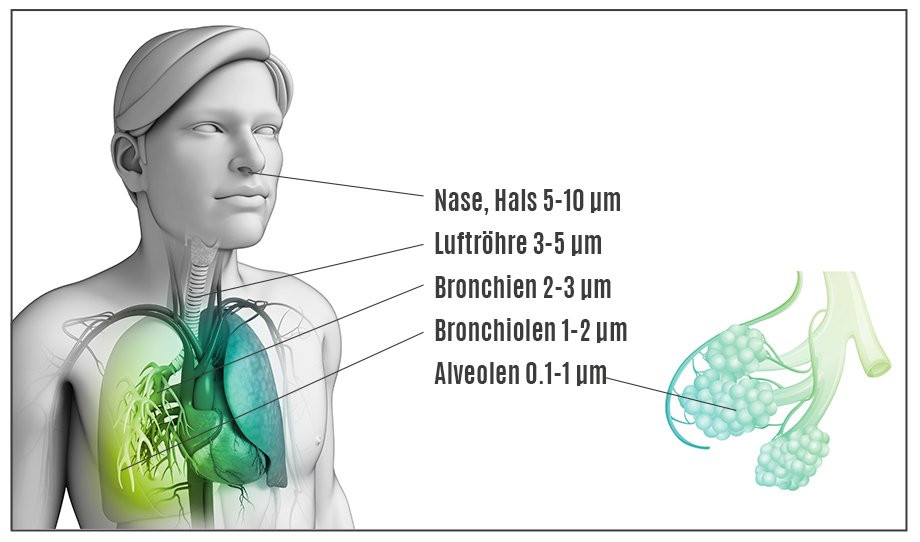We take a look
Just because you have an extraction system does not mean that you are automatically complying with the necessary requirements and standards. It is important to know whether a filtration system has the capacity required, so that any essential measures can be taken.
FILTRACHECK is the analytical service of FILTRACON®, in which we test your extraction system and analyze its performance with the aid of the latest measurement technology.
Especially with older models, a site survey is important, as the type of load may have changed. FILTRACHECK includes a quality control of your system. Here the quality of the interior air is assessed, the sources of particles are identified and filter tests and leak detection tests are also carried out.
Based on our findings, we will recommend a specific solution to suit your needs. Sometimes it is necessary to invest in a new extraction system. But problems can also be rectified and the system adapted to the latest standards by means of targeted measures to modify and optimize your system. Together we find the most effective solution to allow your filtration system to fulfil its purpose optimally in future and to meet the latest standards.

How harmful is fine dust for your health?
Fine dust is also often referred to as PM10. PM stands for ‘particulate matter’ and means suspended matter. The 10 stands for the maximum diameter of the dust particles – namely, 10 micrometers (10 µm). A human hair is roughly ten times as thick. Particles of this size or smaller cannot be held back in the upper airways and do enter the lungs.
After PM10, there are even finer classifications such as PM2.5 (fine particulate matter) and PM0.1 (ultrafine particulate matter). Particles PM2.5 or smaller are also called respirable particulate matter. That means these particles can reach even the smallest bronchioles and pulmonary alveoli. The PM0.1 (ultrafine particles) even penetrate the lung tissue and blood to enter the entire body, and even reach the brain.
Because of the various sources, particulate matter consists of many different chemical compounds. Tiny, carcinogenic soot particles are particularly toxic. In the area around the source such as a diesel engine without a particle filter, they have a diameter of a maximum of one ten-thousandth of a millimeter (PM0.1). These especially fine dust particles are very jagged indeed. For that reason, other toxic substances can attach themselves to them very easily.
The FILTRACON® FILTRACHECK & AMBICHECK
You already have a dust extraction system but are not sure if it is performing as it should? Or have the types of demands being placed on it changed over time? These are good reasons to have an analysis done. Then you can be certain if the existing installation is fulfilling its purpose or might possibly need to be adjusted in order to deal with current or future demands.
Range of Services Provided
Volume flow
- Using: an anemometer with an impeller-wheel measuring probe for measurements in the canal
- Range of measurement: +0.6 to +40 m/s
- Accuracy: ±0.2 m/s – +1.5 % of measurement
Temperature
- Using: a tester for measurements in the canal or open area
- Range of measurement: from -20 to +70 °C
- Accuracy: ±0.3 °C
Differential pressure
- Using: a hose connection for measurements in the canal
- Range of measurement: 0 to +25 hPa
- Accuracy: ±0.02 hPa at 0 to +2 hPa – 1 % of measurement for the remaining range of measurement
Humidity
- Using: a tester for measurements in the canal or open area.
- Range of measurement: from 0 to +100 %rF
- Accuracy: ±2.5 %rF (+5 to +95 %rF)
Particle counts
- The laser particle counter is a compact and highly precise measuring device. Using its six measuring channels, it can show the cumulative and differential particle sizes.
- The device meets the following standard: ISO 21501-4, data report according to ISO 14644-1 as well as EU GMP and conforms to JIS B9921.
Emission clean gas side
- Laser photometer with data logging to determine the mass concentration. Measurement of dust, smoke, vapor, and oil mist.
- Accuracy: ±0.1 % of measured value or 0.001 mg/m³/h, of larger values
Emission ambient air
- Laser photometer with data logging to determine the mass concentration. Measurement of dust, smoke, vapor, and oil mist.
- Accuracy: ±0.1 % of measured value or 0.001 mg/m³, of larger values



